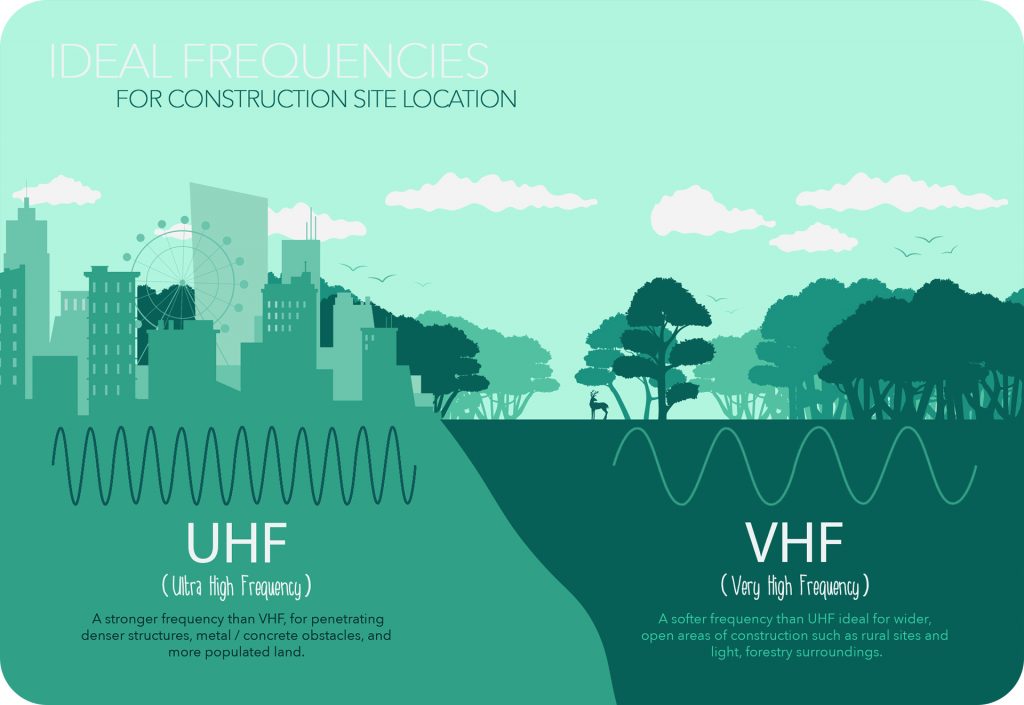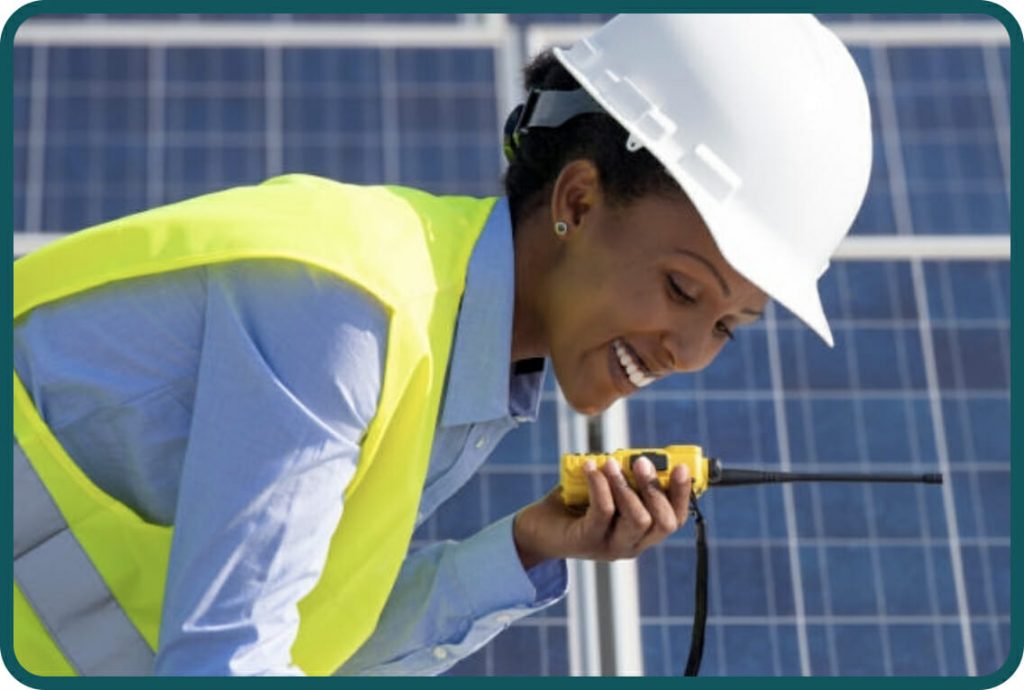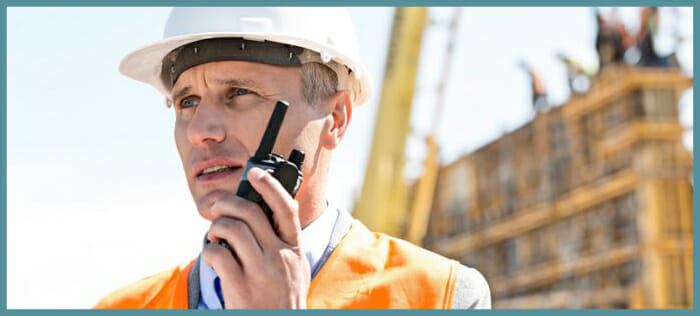Walkie-talkies have progressed a lot since their invention during the Second World War. A portable two-way radio system is still perfect for use in many workplaces, particularly construction sites where communication between workers is paramount for safety.
Over time, the walkie talkie market has become increasingly saturated, making it hard to pin-point the ideal system to use on your construction site. However, with a little help identifying the key features you require from a two-way radio, deciding on the right option doesn’t need to be as complicated as it initially appears.
Business vs Consumer Walkie-Talkies
Almost all walkie-talkies fit into one of two camps: business or consumer. When looking for your ideal two-way radio system for a construction site, chances are the business option will be the best. Whilst some people may be put off by the steep price difference, in this instance it will certainly pay to upgrade.
Whilst consumer walkie-talkies often have a flimsier build, being designed for recreational use, business models are manufactured with durability in mind. They are built to withstand increased wear and tear, including exposure to rain, salt air, dust and shock when dropped, which is especially vital on a busy construction site. Not having to constantly replace broken walkie-talkies is guaranteed to save you money in the long run.
Business walkie-talkies also benefit from access to higher frequencies. This means you can be confident that all your workers will remain within range, avoiding annoying, or potentially dangerous, drops in communication.

VHF or UHF two-way radios
Another key factor to consider when looking for a walkie-talkie is the location of your construction site, and which type of frequency will be best suited – VHF or UHF.
Sitting at the weaker end of the spectrum, VHF (Very High Frequency) radios can cover long distances with less battery depletion. VHF signals are unable to penetrate denser materials, which means VHF radios are ideal for working in open spaces, but fall short if used in an area filled with solid obstacles such as trees or buildings.
On the other hand, UHF (Ultra High Frequency) signals can penetrate dense structures, including wood, metal and concrete, making it a favourable option for inner-city use or in wooded or hilly areas of the countryside. The strength of a UHF broadcast means that, in most cases, it is the better choice for use on a construction site, where obstacles could interfere with a weak signal, and dense materials are often used.
Another factor to consider when making the choice between VHF and UHF radios is the physical build of the walkie-talkie. VHF radios require a larger antenna, which could be impractical if an employee is required to keep their walkie-talkie on their person. UHF walkie-talkies tend to be more compact, with a much shorter antenna – making them ideal for more mobile personnel.
Choosing the best walkie-talkie for the size of your team
The number of people who need to be able to communicate via your two-way radio system will greatly influence which type you choose. For example, some construction sites hold hundreds of people, and span impressive distances. For a large site, aspects such as how many devices can be charged at one time must also be considered – it’s counterproductive to have a team member’s walkie-talkie die halfway through the day. Also, larger sites will almost definitely need to consider a licensed radio system in order to ensure all employees are kept within range.
A smaller site with fewer employees may not need a licence – you’re unlikely to cover such a wide area. Closeness in proximity will reduce the risk of interference and will also provide more reliable signal coverage.

Do you need to license your two-way radio system?
In the UK, some two-way radio use requires a licence, which must be approved by Ofcom. Licence-free radios can only be used within pre-programmed frequencies, between 446.0 MHz – 446.1 MHz, with eight different frequencies available to use.
Whilst undoubtedly being a cheaper option, licence-free two-way radios do have their drawbacks. One significant disadvantage on a construction site is the possibility of encountering interference if other radios are in range. Another setback is the first-come-first-serve basis for allocating active users on a channel. If mobile communication is imperative, as it is on most construction sites, users could find themselves jostling for priority to talk.
Choosing to purchase a licence for your walkie-talkie isn’t as complicated as it may sound, nor is it overly expensive: Ofcom licences begin at £75, and last for five years. Users of licensed walkie-talkies will find that they benefit from uninterrupted communications with their colleagues, as well as a much wider frequency range. Depending on which licence you choose, there is also the option for the licence to cover usage across the entire country. This is hugely beneficial if users find themselves working across numerous sites.

